
Every month, it happens—your cycle rolls in, and with it comes a whirlwind of changes to your body and emotions. Instead of dreading it, what if you could work with your cycle to feel more in control? Just like seasons, each phase of your menstrual cycle comes with its unique characteristics and needs, and learning to work with them can make all the difference. You wouldn’t go sledding in summer, right? By learning how to care for yourself during each phase, you can optimize your energy, improve your mood, and feel your best. Let’s dive into some period self-care tips that will help you navigate Aunt Flow’s visit with confidence.
This post may contain affiliate links, which means I’ll receive a commission if you purchase through my links, at no extra cost to you. Please read full disclosure for more information. Additionally, I am not a doctor. Always seek a medical professional for personalized medical advice.
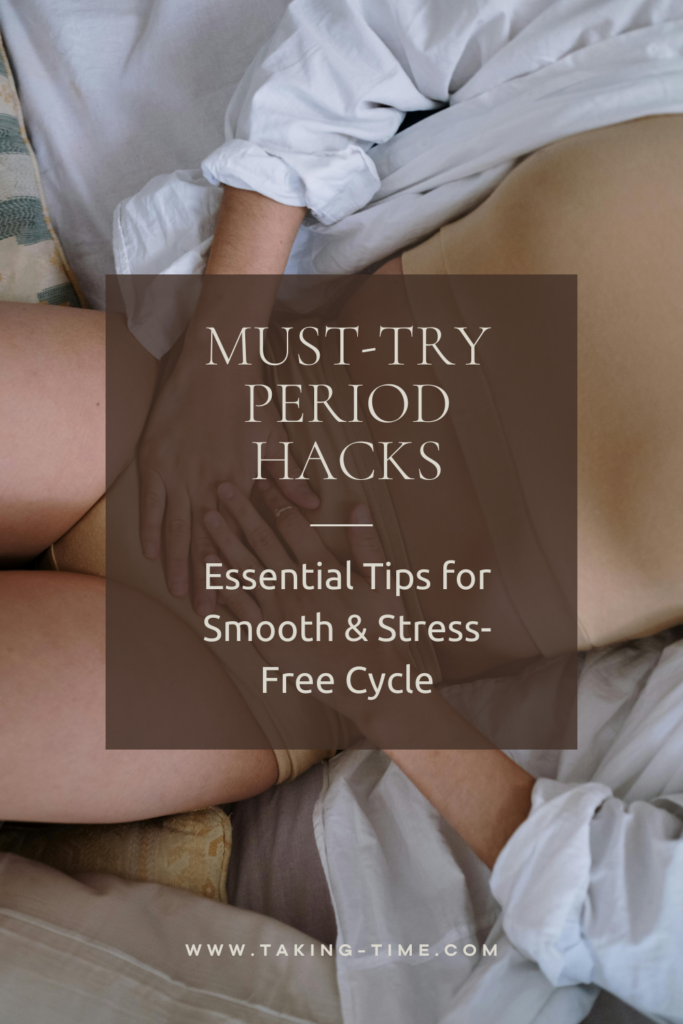
Understanding the Menstrual Cycle
Your menstrual cycle has four key phases, each driven by hormonal shifts that impact your body and emotions. Here’s a closer look:
1. Menses Phase (Days 1–5)
This phase starts on Day 1 of your period. Your body is shedding the uterine lining because pregnancy didn’t happen this month. You might experience cramps, lower back pain, fatigue, and emotional sensitivity. Your hormone levels, particularly estrogen and progesterone, are at their lowest, which can leave you feeling drained.
Even though this phase can be tough, it’s also a good time to rest, reflect, and reset. Think of it as your body’s “winter”—a time to slow down and conserve energy. Use this phase to set intentions and plan for the month ahead so that you can hit the ground running once you enter the next phase.
2. Follicular Phase (Days 6–13)
Once your period ends, estrogen starts to rise, making you feel more energetic and upbeat. Your body begins preparing for ovulation by growing a new follicle in the ovaries. This is the “spring” of your cycle, and it’s a great time to focus on new projects, learn something new, or enjoy more vigorous workouts like weightlifting or cycling.
3. Ovulation Phase (Day 14)
Ovulation is the “summer” of your cycle, when your energy and confidence peak. Your body releases an egg, and you may feel more social, outgoing, and even glowing—thank those rising estrogen levels! This is the best time for public speaking, networking, or date nights.
4. Luteal Phase (Days 15–28)
This is the “autumn” of your cycle, as your body winds down in preparation for menstruation. Progesterone rises, which can cause symptoms like bloating, mood swings, and fatigue. You may feel more introspective, which is perfect for organizing, journaling, or slowing down. Be kind to yourself during this phase—it’s natural to need more rest.
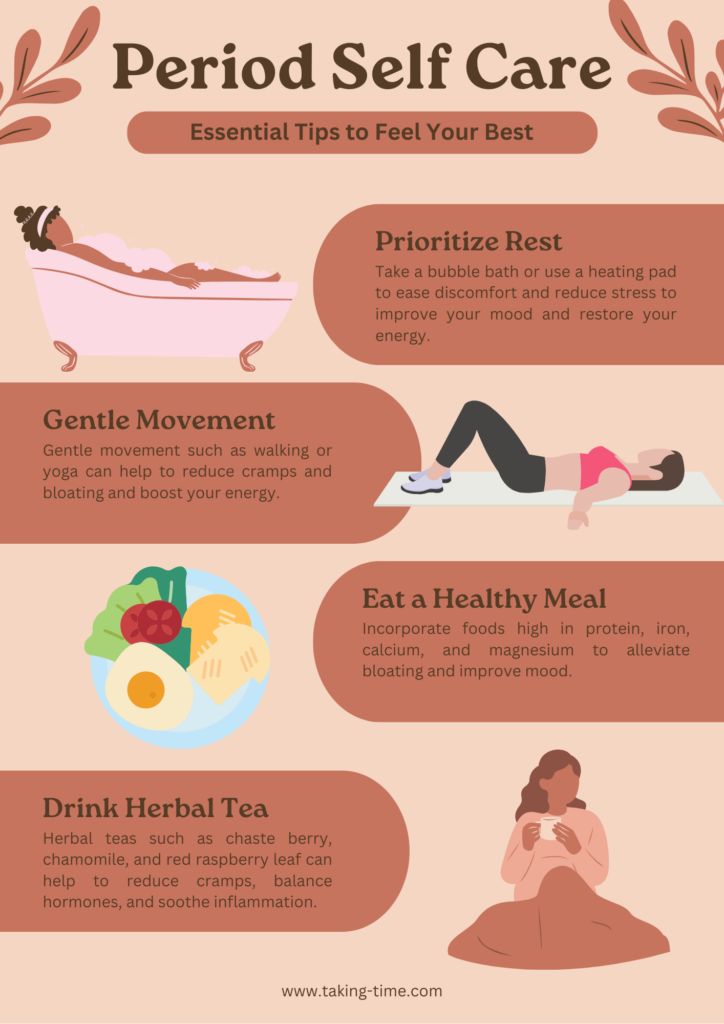
Period Self-Care Tips
Taking care of yourself during your period isn’t just about surviving; it’s about thriving. Here’s how to make the most of your menses and luteal phases:
What To Do on Your Period at Home
- Stay Hydrated: Water helps combat bloating and fatigue. Herbal teas like chamomile and red raspberry leaf can soothe cramps and promote relaxation.
- Use Heat: A heating pad or warm bath can ease cramps and improve circulation.
- Try Gentle Movement: Light yoga, stretching, or a short walk can release endorphins to reduce pain.
- Create a Cozy Atmosphere: Dim the lights, grab a blanket, and give yourself permission to rest.
For more self-care ideas, check out this post.
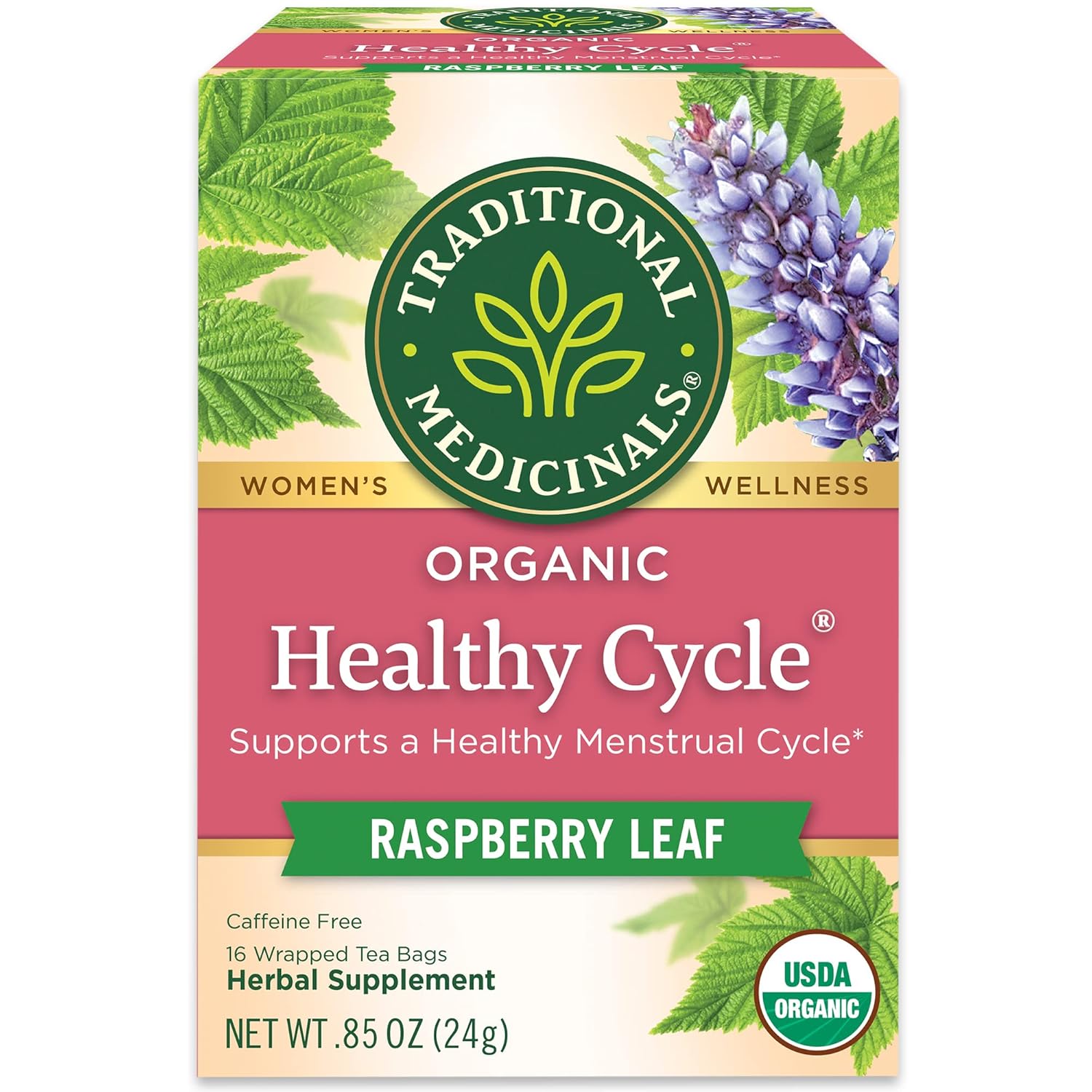
Traditional Medicinals Flavor Variation (Raspberry Leaf)
What to Eat on Your Period
Your diet can significantly impact how you feel during your cycle. Focus on nutrient-rich foods that support your body:
- Iron & Protein: Lean meats, beans, spinach, and lentils replenish iron lost during menstruation.
- Magnesium: Almonds, dark chocolate, and avocados reduce muscle tension and improve mood.
- Vitamin B6: Bananas, chickpeas, and fish can alleviate bloating and irritability.
- Calcium: Dairy, salmon, leafy greens, and fortified cereal can help reduce cramps and mood swings.
- Anti-inflammatory Foods: Ginger, turmeric, and fatty fish like salmon to reduce bloating and soothe discomfort naturally.
- Tryptophan-Containing Foods: Turkey, oats, and pumpkin seeds can naturally boost serotonin.
Adding nutrient-rich foods to your diet ensures your body has everything it needs to feel strong and balanced.
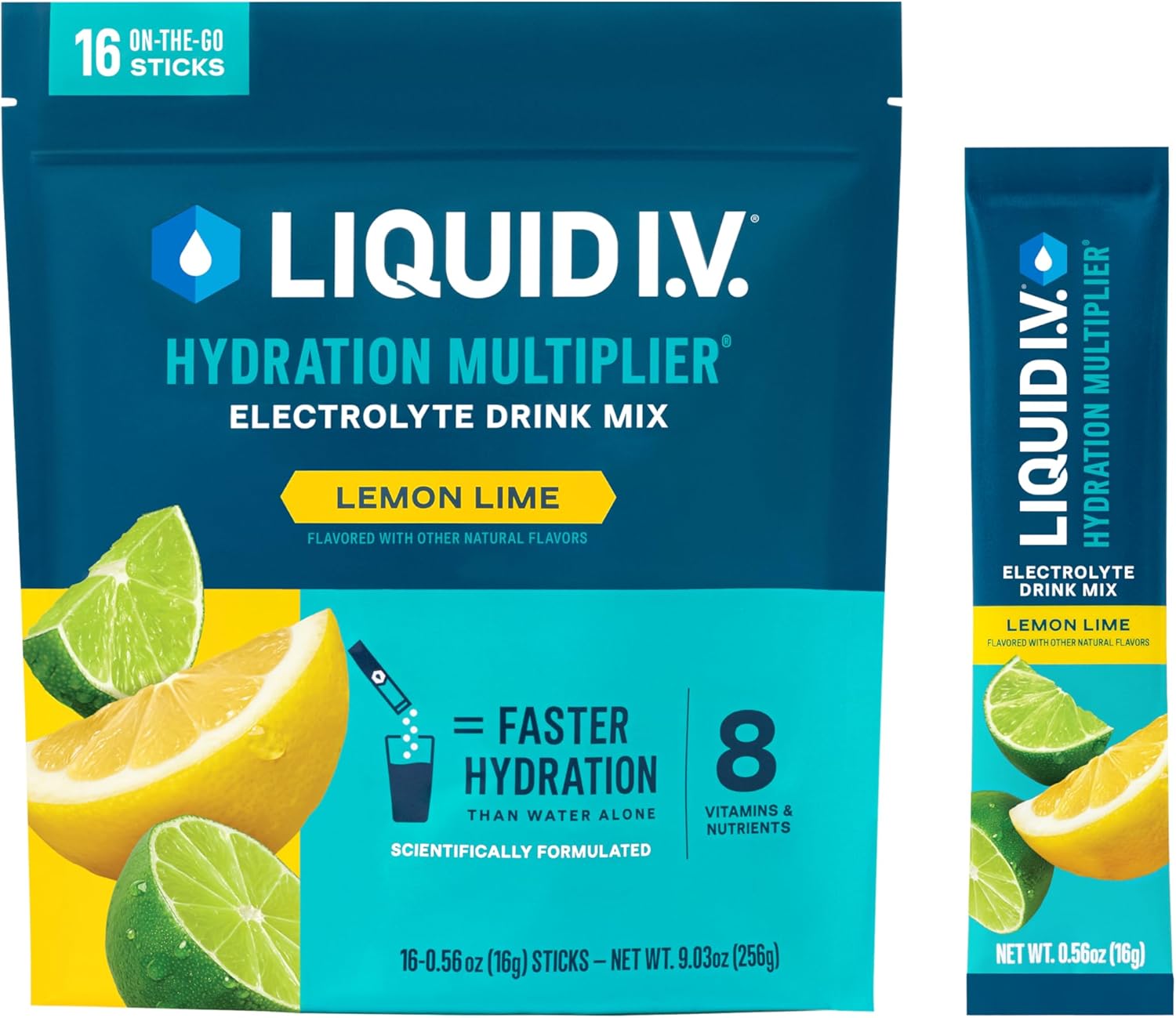
Liquid I.V.® Hydration Multiplier – Lemon Lime | Electrolyte Powder Drink Mix | 1 Pack (16 Servings)
Sample Meal Plan for Balanced Nutrition
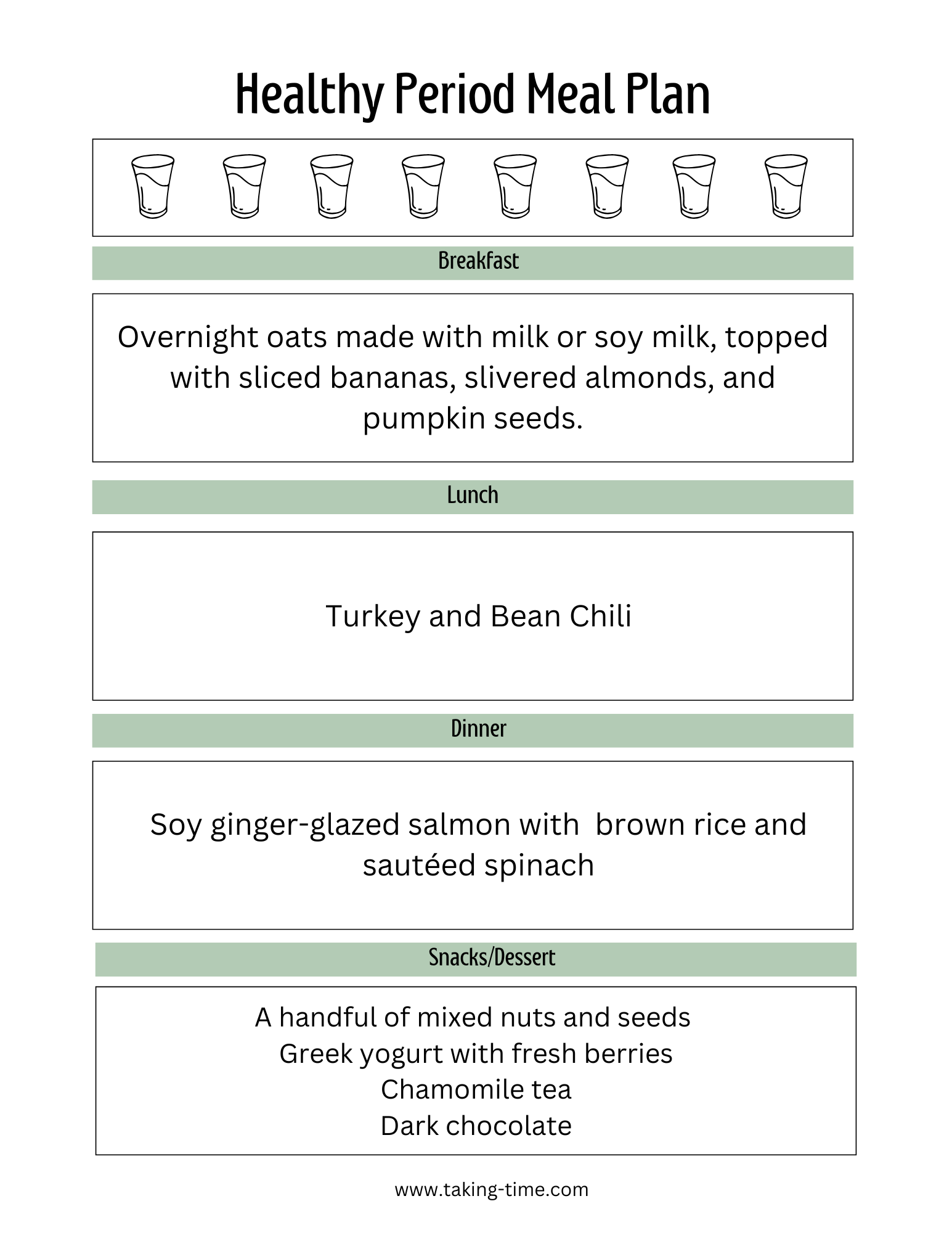
Here’s a breakdown of what your meals could look like to support your body during your cycle:
Breakfast:
Overnight oats made with milk (or a dairy alternative), topped with sliced bananas, slivered almonds, and pumpkin seeds. This meal is rich in magnesium, fiber, and healthy fats to fuel your day.
Morning Snack:
A handful of mixed nuts and seeds or a small serving of Greek yogurt with fresh berries. Perfect for a mid-morning energy boost!
Lunch:
A hearty bowl of turkey chili loaded with beans, tomatoes, and spices. High in protein and iron, it’s a comforting yet nutrient-dense option.
Dinner:
Soy ginger-glazed salmon served with a side of brown rice and sautéed spinach. This meal is packed with omega-3 fatty acids, whole grains, and leafy greens to support hormone health and reduce inflammation.
Dessert:
Indulge in a few squares of dark chocolate paired with a soothing cup of chamomile tea. The chocolate satisfies your sweet tooth while chamomile promotes relaxation and reduces cramps.
Build the Best Period Self-Care Kit
Having a period self-care kit ready to go will help you feel better when Aunt Flow comes a-knockin’. It can also be a great gift *ahem* from husbands and boyfriends when the woman in your life isn’t feeling so hot. Here are some great things to include:
- Period Products: Tampons, pads, panty liners, or period underwear ($30 for pack of 5).
- Comfortable Clothing: Stretchy pants, cozy socks, and soft bras.
- Heating Pad: I love this wearable one ($19) because you can use it anywhere, even on the go.
- Relaxation Must-Haves: Sheet masks ($19), bath bombs, or under-eye patches ($10).
- Indulgent Treats: A bar of good-quality dark chocolate.
- Soothing Teas: Chamomile, chasteberry, or red raspberry leaf tea for cramps.
Bonus points for including a thoughtful note or flowers—it’s the little things that make all the difference!
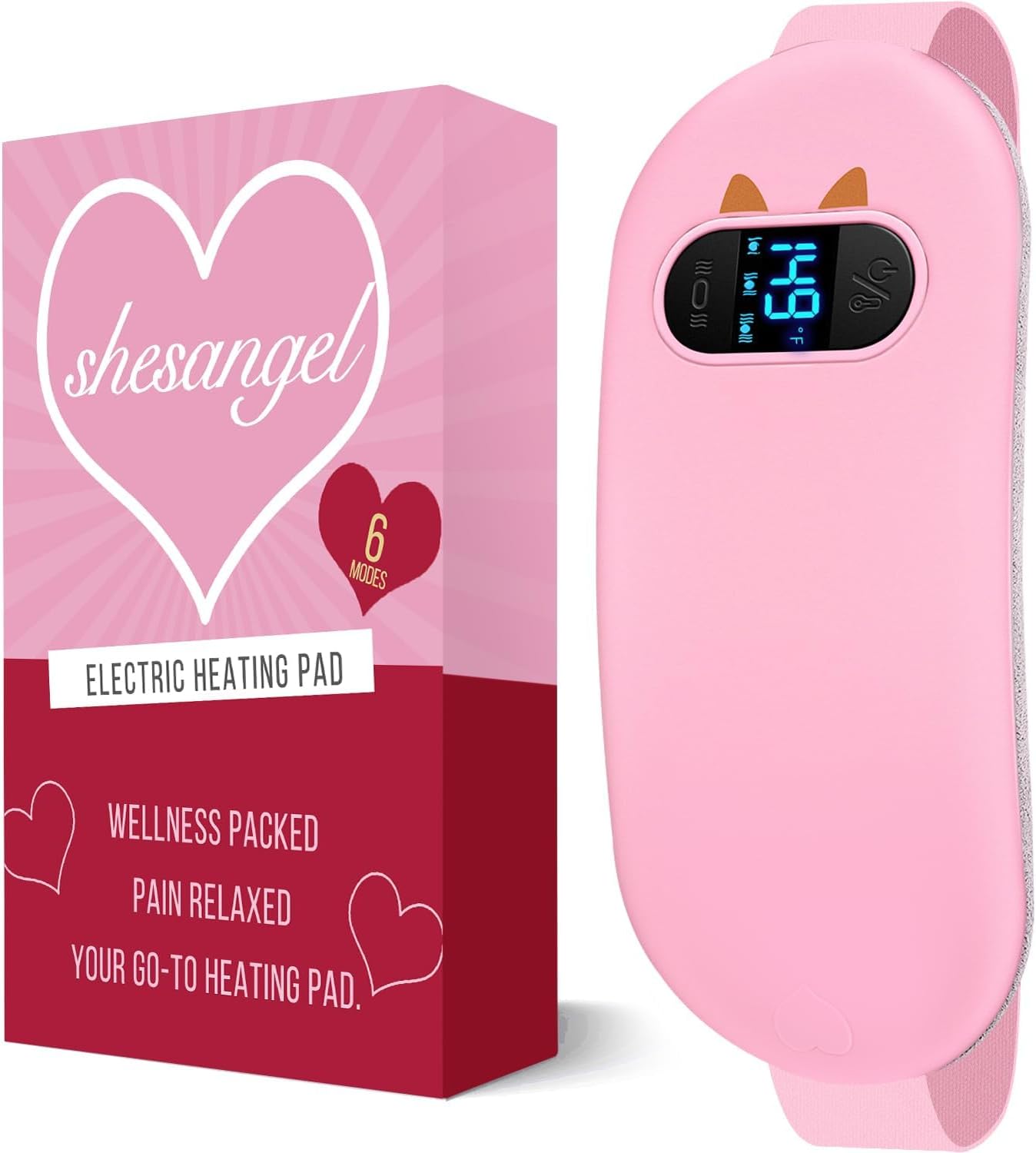
Portable Heating Pad for Period Cramps: FSA HSA Eligible Cordless Menstrual Heating Pad with 6 Heat Levels and 6 Massage Modes, 3s Fast Heating Gift for Women and Girl(Pink)
5 Important Things You Should Avoid During Periods
Certain habits can make period symptoms worse. Avoid:
- Excess Sugar: It can amplify mood swings and cause energy crashes.
- Salt: Worsens bloating.
- Caffeine: Increases anxiety and breast tenderness.
- Highly Processed Foods: Full of inflammatory ingredients that can exacerbate discomfort.
- Alcohol: Disrupts sleep and hormones.
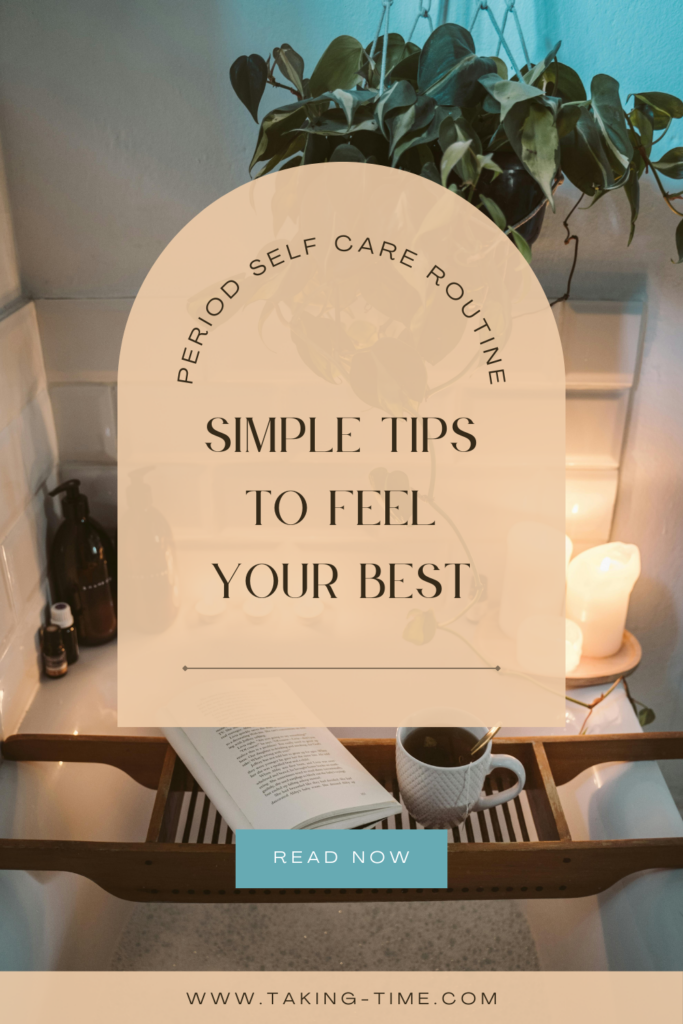
Why Track Your Cycle?
Tracking your menstrual cycle isn’t just about predicting your period—it’s about understanding how your body works. Apps like Clue or Flo can help you pinpoint when to expect shifts in energy, mood, and physical symptoms, giving you a roadmap to adjust your daily routines and plan activities effectively.
For instance, knowing when you’re entering the luteal phase could remind you to slow down, prioritize self-care, and avoid over-scheduling. Conversely, recognizing the follicular phase might inspire you to tackle new projects or schedule high-energy activities.
Cycle tracking can also provide insights into your health. By recording symptoms like severe cramps, irregular cycles, or hormonal imbalances, you can better communicate with healthcare providers if needed. Over time, tracking helps you identify patterns, making it easier to align your workouts, diet, and self-care practices with your natural rhythm.
For more apps to optimize your life, check out this post.
Recommended Reads
Want to learn more? These books can help dive deeper into the science of your menstrual cycle:
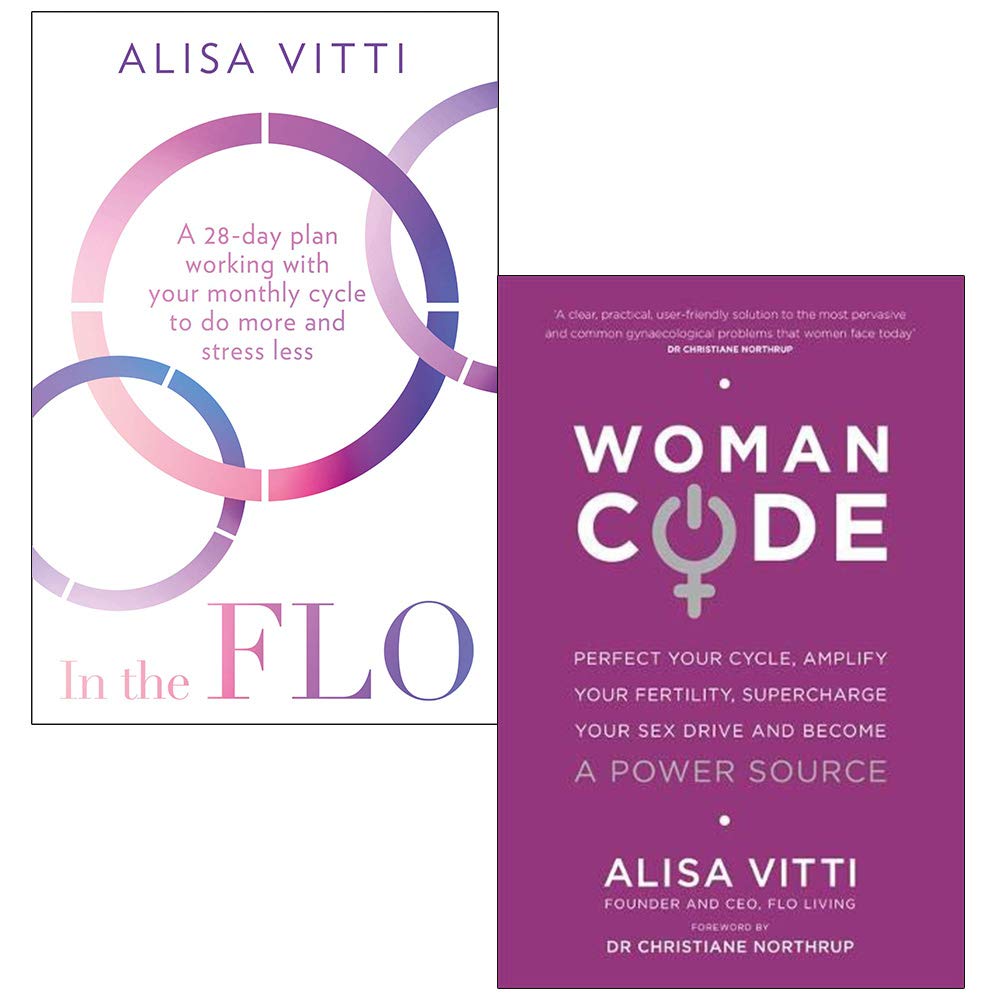
In the FLO A 28-day plan working with your monthly cycle to do more & Womancode: Perfect Your Cycle Amplify Your Fertility Supercharge Your Sex Drive By Alisa Vitti 2 Books Collection Set
Summary
Your menstrual cycle is more than just a monthly event—it’s a roadmap for self-care and empowerment. By understanding each phase and prioritizing your needs, you can turn Aunt Flow’s visit into a time of renewal. Share your favorite self-care tips in the comments, and don’t forget to subscribe to the Taking Time newsletter for more tips on living your best life!
Frequently Asked Questions
How do you prevent brain fog on your period?
To combat brain fog, prioritize hydration by drinking plenty of water or adding electrolyte boosters like Liquid IV. Incorporate tryptophan-rich foods (turkey, bananas) and snacks with magnesium and vitamin B6 (almonds, pumpkin seeds). Light exercise, such as yoga or walking, can also boost circulation and clear your mind. Journaling or mindfulness practices can help you stay focused and manage stress.
How can my boyfriend help with my period cramps?
Your boyfriend can support you by offering practical solutions and comfort. He could:
- Provide a heating pad for cramps or help prepare a warm bath.
- Brew a soothing herbal tea like chamomile or red raspberry leaf.
- Offer snacks that reduce inflammation, such as dark chocolate or nuts.
- Gift a thoughtful period self-care kit with essentials like your favorite period products, comfy clothes, and treats.
What does self-care look like during your period?
Self-care during your period involves addressing physical and emotional needs. This could include:
- Eating iron-rich and anti-inflammatory foods like spinach and salmon.
- Relaxing with a heating pad or a warm bath.
- Journaling, meditating, or spending time with loved ones to lift your mood.
- Wearing cozy clothes and taking naps to recharge.
It’s all about listening to your body and responding to what it needs.
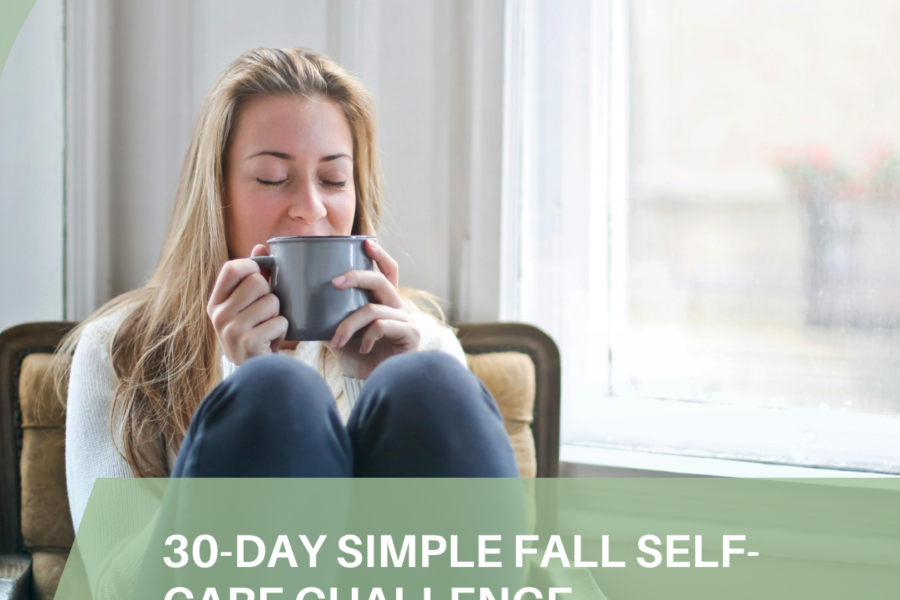

Leave a Reply